Adventurous Kate contains affiliate links. If you make a purchase through these links, I will earn a commission at no extra cost to you. Thanks!
Can Americans travel to Cuba? They can, because I’m American and I’m here. I’m nervous in the waiting line at Cuban immigration, but I know I shouldn’t be. I did everything right.
Still, this is Cuba. I’m visiting Cuba as an American. Can Americans even visit Cuba? Yeah, we can. This country has been off-limits to us since 1959 — though that hasn’t stopped lots of Americans from visiting Cuba both legally and quasi-legally.
The agent calls me forward. I hand him my navy blue passport and half-smile, half-cringe. Yes, I’m here, and I’m American, and I’m sorry our country has cut you off, and I disagree with it — but hey, I’m here, and I want to get to know you. It’s an expression that will color my face for days, until a cooking class in central Havana sets me straight.
“Stamp?” he asks, holding up the stamp. Cuba is like Israel; they won’t stamp your passport if you don’t want them to.
Do I get a Cuba stamp? Will American immigration care? Will it get me hassled at the border for years to come? I only just got this new passport in April.
But I want it.
“Sí,” I tell him.
He brings the stamp down on my passport. “Welcome to Cuba.”
Want to know where to go? Check out my post on the best places to visit in Cuba!
This post was last updated in April 2024.
Table of Contents
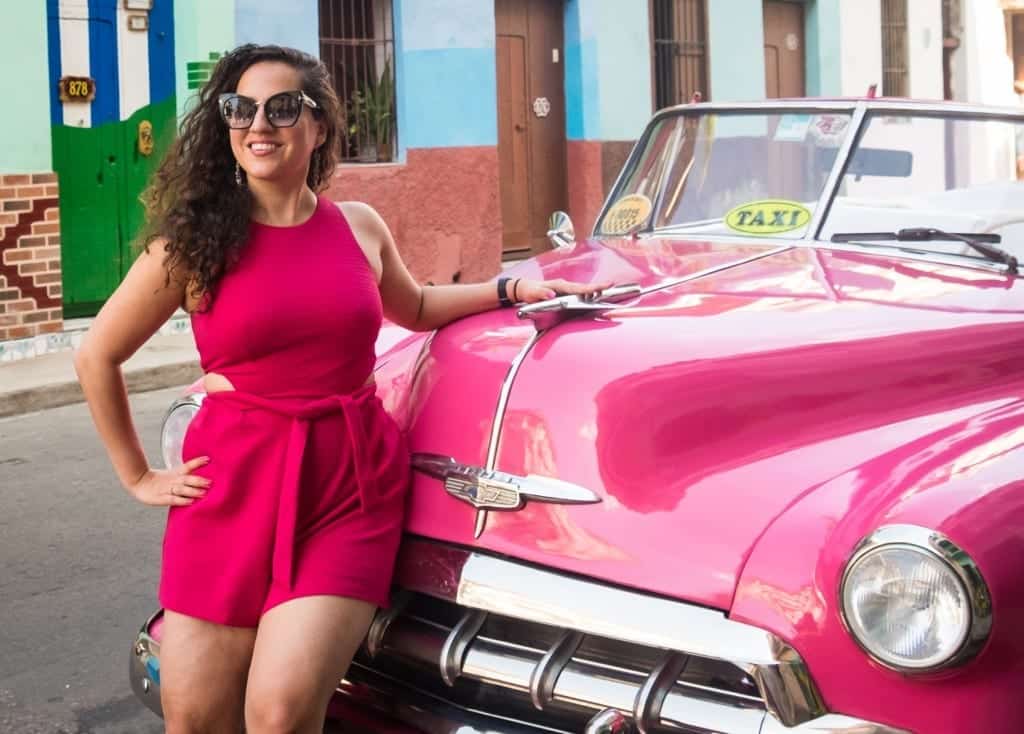
Can Americans travel to Cuba?
Yes, Americans can travel to Cuba. Americans can easily get a Cuban travel visa, and you can even fly to Cuba from the United States. The process is a lot easier than you might think.
No, Americans cannot use credit cards or even ATMs in Cuba. Your bank will freeze your account if you attempt to do so. Here is how Americans are allowed to use money in Cuba.
There is internet in Cuba, but it’s very limited — most of the time, you need to buy a one-hour wifi card and visit an access point in order to use it. Find out how here.
Yes, there are nonstop flights to Havana from cities like Miami, New York, Fort Lauderdale, Atlanta, and more. In order to take these flights to Cuba, you must have a visa to Cuba.
Trump removed the “people-to-people” category for visas to Cuba, but you can get a similar visa under the “support for the Cuban people” category, and it’s still as easy to visit Cuba as it was when Obama was president. Biden has not made any major changes since taking office in January 2021.
Yes, Americans can travel to Cuba — there are multiple ways to do so. You can visit Cuba in a completely legal way, obtaining a visa in advance, or you can do what many Americans do — simply book a flight from another country, like Mexico.
Read on for the ways to visit Cuba legally when you hold a US passport.
Can Americans Travel to Cuba in 2024? (COVID Entry Requirements)
COVID-19, also known as the coronavirus, led to travel restrictions around the world, including Americans traveling to Cuba.
April 2024 update: There are no longer COVID-related entry requirements for entering Cuba.
A negative test is no longer a requirement for foreigners entering Cuba, and it’s no longer a requirement to be fully vaccinated against COVID. There is no longer a quarantine requirement, either.
Face masks and hand sanitizer are in short supply in Cuba, and it’s a good idea to bring your own.
You can find more specific information from the US State Department here.
Do NOT travel if were exposed to COVID-19, if you are sick, if you test positive for COVID-19, or if you are waiting for results of a COVID-19 test. Learn when it is safe for you to travel. Don’t travel with someone who is sick.
For more information on Cuba and why American citizens aren’t allowed to visit Cuba in most circumstances, and what changed, read on!
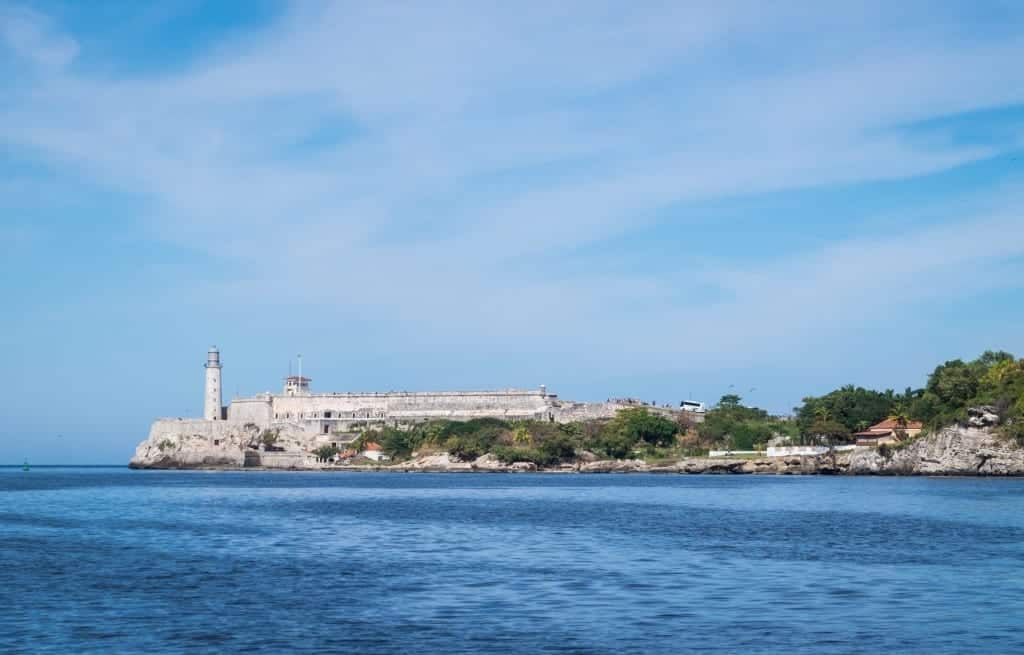
How to Get a Visa to Cuba as an American
If you want to visit Cuba as an American and do it legally, you will need to obtain a Cuban visa in advance. This is also called a “general license” and the Cuban government requires it to travel to Cuba. It can be a bit confusing, but calling it the general license is the way to go.
There are 12 categories for your general license, decided by the Office of Foreign Assets Control (OFAC):
1: Family visits
2: Official business of the U.S. government, foreign governments, and certain intergovernmental organizations
3. Journalistic activity
4: Professional research and professional meetings
5: Educational activities
6: Religious activities
7: Public performances, clinics, workshops, athletic and other competitions, and exhibitions
8: Support for the Cuban people
9: Humanitarian projects
10: Activities of private foundations or research or educational institutes
11: Exportation, importation, or transmission of information or informational materials
Certain export transactions that may be considered for authorization under existing Department of Commerce regulations and guidelines with respect to Cuba or engaged in by U.S.-owned or -controlled foreign firms.
There used to be a “People-to-People Activities” category, which was part of “Educational Activities” and one of the easiest categories to fulfill, but that category was removed during the Trump Administration.
Joining a tour group can be a fun way to visit Cuba — but keep in mind that many international tour operators that offer Cuba tours don’t allow American citizens to join them. There are other, specialized Cuba tour operators that provide the paperwork that allows Americans to visit (often trips that qualify as journalistic or religious activities).
And what about Cuba cruises? There used to be a handful of cruise lines traveling to Cuba, but not these days. Cruise ships are not docking in Cuba during COVID. Will this change in the future? We’ll see.
Best Way to Get a General License
If you are a regular person who wants to visit Cuba as a tourist, I recommend getting a general license under the “Support for the Cuban people” travel category. This is similar to acquiring one through a tour operator, and the easiest way to do so is to work with a company like ViaHero.
ViaHero builds custom itineraries for trips, and each itinerary is designed by locals. While ViaHero operates all over the world, they are particularly good for Cuba because a ViaHero itinerary will count as valid documentation for the “Support for the Cuban People” general license.
Best of all, ViaHero will book your transportation in Cuba — usually a huge headache on your own — and they’ll walk you through getting your Cuba visa. You can learn more here.
If you have a visa, you can fly direct to Cuba from the United States! Seriously. There are flights from Miami, New York, Fort Lauderdale, Atlanta, and more. Even on American Airlines. You can find cheap flights from the US to Cuba on Skyscanner. Some flight booking websites won’t show flights to Cuba, but Skyscanner does.
If you’re flying to Cuba from the United States, you’ll need to pick up the “pink tourist card” at the airport. You can get this at check-in or at the ticket office of your airline. (You can also buy it in advance, but this isn’t necessary. I wouldn’t waste your money on the $35 “processing fee.”)
Most travelers to Cuba get the regular or “green tourist card,” but if you’re arriving on a flight from America, you’ll need the pink tourist card.
If you have a visa but you’re flying to Cuba via Mexico or another country, you will need the green Cuban tourist card instead. More on that below.
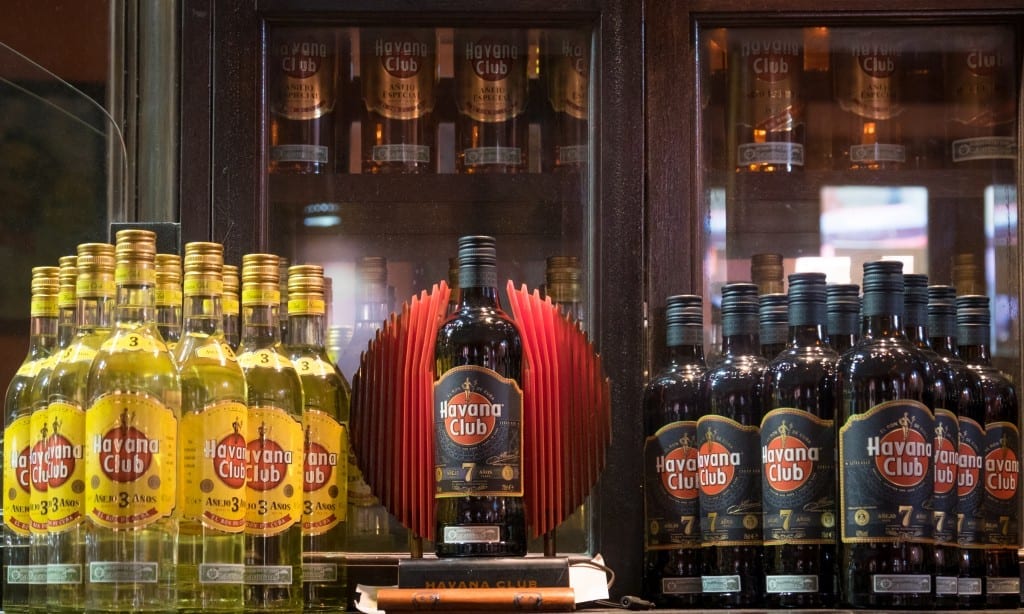
Visiting Cuba as an American Without a Visa or General License
The other way to visit Cuba as an American is a bit of a legal gray area: flying into another country and booking a separate flight to Cuba from there. Cancún is a popular option, as it’s often cheap to fly there and flights from Cancún to Havana take just over an hour.
You can also fly to Havana from Mexico City, Mérida, and several other cities in Mexico. And of course, you can fly there from Canadian cities like Toronto.
For cheap flights to Cuba, I recommend using Skyscanner. Some flight booking websites won’t show flights to Cuba, but Skyscanner does.
If you choose to visit Cuba this way, you will not need to secure a visa in advance. The only thing you will need is the Cuban tourist card, sometimes called the “green tourist card.” You pick this up at the airport — you go to your airline’s ticket office.
In Cancún’s airport, Interjet sells the tourist cards where you get in line to check in for the Havana flight. The cost is 25 USD.
Cuban immigration doesn’t care if you show up without an American visa. It makes zero difference to them. The only thing they care about is the tourist card. And Cuba won’t stamp your passport if you don’t want them to.
What else do Americans need to know before visiting Cuba?
Travel insurance is required in order to visit Cuba. You may or may not be asked for proof of this (I wasn’t). I recommend printing it out so you’ll be able to show it.
Americans can’t spend any money at Cuban establishments on the restricted list. Many government-owned hotels are on the list, so you should double-check the list before booking your stay. You can see the full list here.
You should also keep your receipts. The US government is allowed to ask you for your receipts from a trip to Cuba for up to five years after you return.
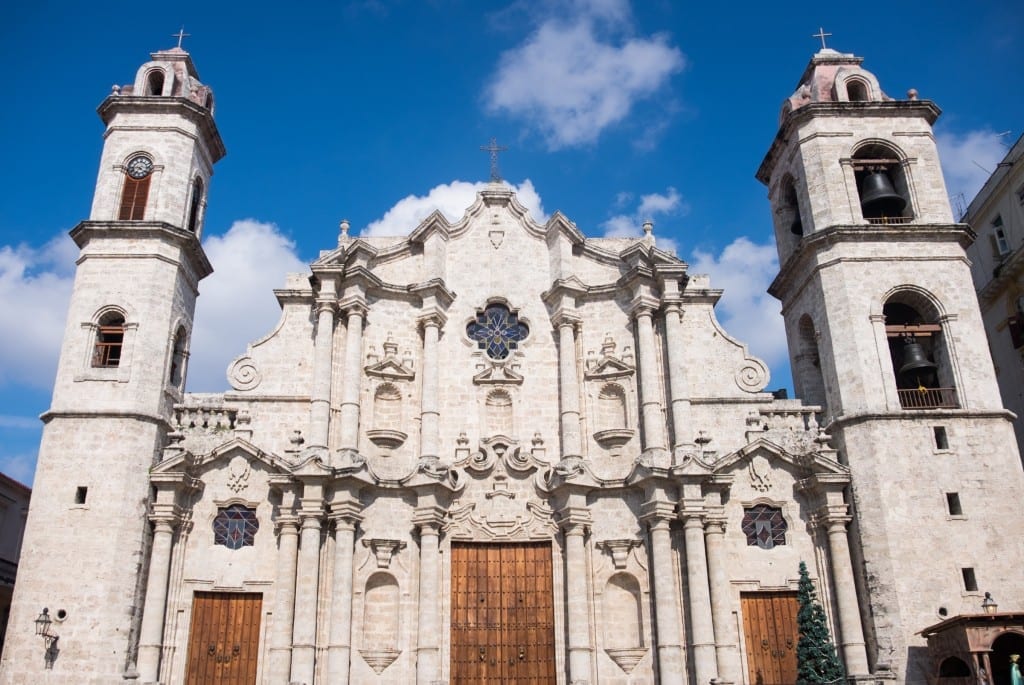
Money in Cuba as an American
But visiting Cuba as an American is complicated. Americans cannot make financial transactions in Cuba. You can’t use ATMs, debit cards, or credit cards, even if you have a visa, which means that you need to arrive with all the cash you’d need for your full stay.
I have a bit of a cushion on my trip — I’m traveling to Cuba with my boyfriend Charlie and our friend Klara. Charlie is a British citizen with Czech permanent residency; Klara is a Czech-Canadian dual citizen. Both are able to use ATMs, debit cards, and credit cards in Cuba; if I run out of money, I can rely on them.
Soon, however, we learn that ATMs don’t always work in Cuba — even for non-Americans. Charlie arrived a day before me with some cash, planning to hit the ATM later to take out more, but ATMs in Havana aren’t working for him. At all. We keep trying ATM after ATM; none of them are working on any of his cards.
After a quick visit to the wifi zone outside the Hotel Ingleterra (more on that later) and sending a quick Facebook message to Klara reading, “BRING 400 EUROS, NONE OF THE ATMS ARE WORKING!!” — we try another ATM a few blocks away and finally, blessedly, it works.
It turns out that ATMs in Cuba don’t always like MasterCard. This is a good reason to have a lot of backup cash in Cuba, no matter what your nationality is.
So how do American travelers handle money in Cuba? You’ll be in good shape if you bring US dollars or Euros and exchange them on the ground.
(In the past, US dollars got you a worse rate, but as of early 2024, US dollars and Euros both get you a good rate.) I expected to see exchange shops everywhere in Havana and was shocked when I didn’t see any.
People exchange money at the banks in Cuba, and there are always long lines. You’re best off exchanging money at your accommodation. You can also exchange money at the airport, but you’ll pay a much worse exchange rate.
If I had been traveling solo in Cuba, or only traveling with Americans, I would have kept enough US dollars for transportation to Havana Airport and a flight to Cancún in my underwear at all times. Seriously. I have never done that on my travels, but I would in Cuba. There is no financial safety net here.
And because you’re traveling with large amounts of cash, it’s imperative to keep it stowed safely. I highly recommend using a Speakeasy Travel Supply scarf, which has a hidden pocket the perfect size for a wad of bills and comes in a variety of light fabrics that won’t make you sweat in Cuba. I even designed my own.
You’ll want to bring a portable safe, too. I use a Pacsafe Travelsafe and consider it the most important thing I pack.
Hide cash in secret places in your luggage, too. One of my favorite spots is in a maxi pad or tampon applicator. One of the few nice things about toxic masculinity is that some uptight men will refuse to touch menstrual products — and that makes them great hiding places.
Beyond that, Cuba has two currencies — Cuban Convertible Peso (CUC) and Cuban National Peso (CUP). Most of the time, travelers will use CUC, and it’s valued to the US dollar. CUP are valued at 24 to the CUC and are primarily used by locals.
The easy way to tell them apart? CUC has monuments on it, while CUP has faces on it.
Get rid of your Cuban currency before returning to the US, as you won’t be able to exchange it at US banks and currency conversion places.
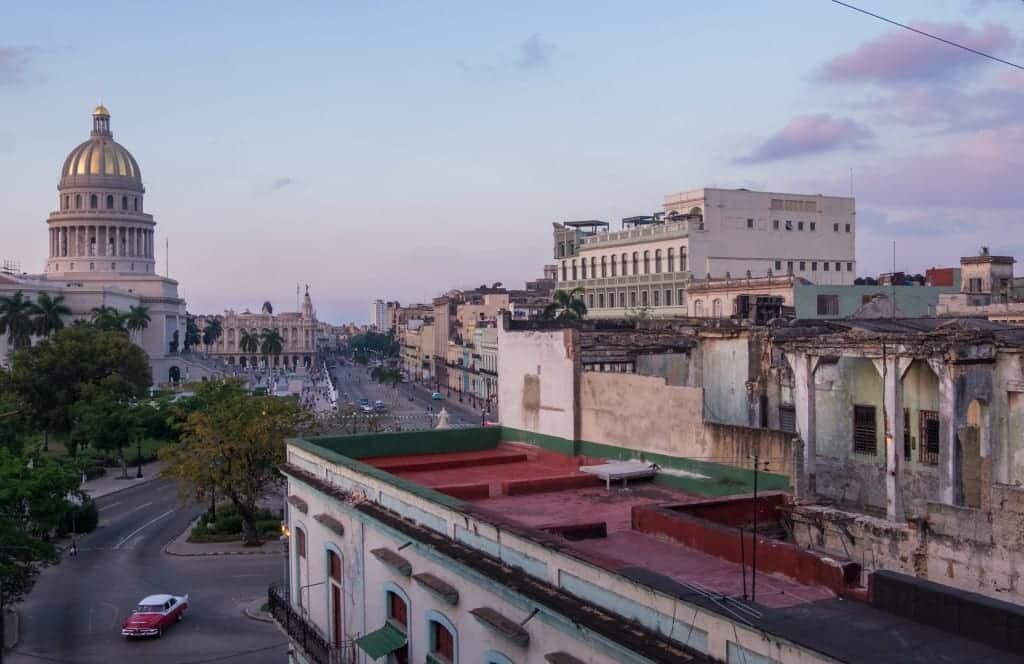
Where to Stay in Cuba
Hotels definitely exist in Cuba — they tend to be large properties and beach resorts. But if you want to stay somewhere more local and special, and put money into the pockets of Cuban citizens who need it, I recommend staying in casas particulares.
Casas particulares are rooms or entire apartments in private homes that Cubans rent out to visitors. They are often quite cheap, usually around $25 per room, and that’s what I paid ($25 for my one-bedroom in Viñales and $50 for my two-bedroom in Havana).
I loved both of the places where I stayed. In Havana I stayed at this two-bedroom, two-bathroom apartment on the edge of Old Havana for $50 per night. It was large and spacious, and felt like an oasis, though it was very loud with the buses rumbling by on the street downstairs. It was fine with earplugs.
In Viñales I stayed at this one-bedroom, one-bathroom suite in a casa particular in town. It was large and spacious with two rocking chairs on the porch out front — peaceful in the countryside!
You can find casas particulares through Airbnb. I recommend using Airbnb to check out what’s available — see cases particulares in Havana here.
The wonderful thing about casas particulares is that they’ll hook you up with the rest of your stay! Looking to head to Trinidad or Cienfuegos next? Tell your casa host, and they’ll call someone they know there and get a room reserved for you at the next place. They’ll even get you a ride if you need one.
My casas particulares also organized onward transportation, tours, currency exchange, and provided drinking water.
This is one of the things I enjoyed most about Cuba — the networks that people have. It’s a throwback in the best possible way.
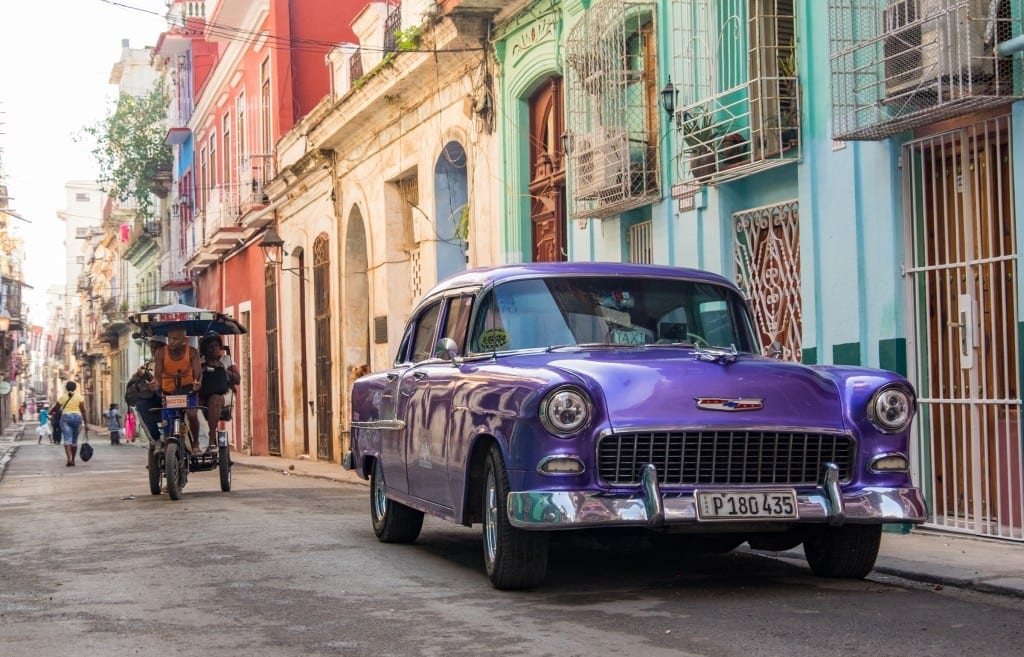
What’s Havana like?
What do people picture when they think about Cuba? Classic cars lining the streets, crumbling colonial buildings, high-rise hotels, salsa bands, beaches lining the edges of the city? Kind of.
Here are my Cuban observations:
Cubans come in every color of the rainbow. I remember in the movie Moonlight when Juan, played by Mahershela Ali, says, “I’ve been here a long time. I’m from Cuba. Lot of black folks in Cuba. You wouldn’t know that from being here, though.”
You’ll see Cubans that look African, Italian, Ecuadorian, Scandinavian, and there’s a sizable Chinese community in Cuba, too. There is no one way to look Cuban, at least physically.
The classic cars really are a thing in Cuba. Everyone knows about Cuba’s classic cars, and it’s entertaining to see what drives down the street. You see a lot of Russian cars like Ladas. The nicest, shiniest classic cars are used for expensive taxi rides and city tours for tourists.
Roughly one third of the cars in and around Old Havana were classic cars; there were also plenty of grungy 80s hatchbacks and early 2000s taxis. Unfortunately the old cars have terrible exhaust.
Cubans have an interesting accent. It’s unlike any other Spanish accent I’ve heard, and the letter s gets dropped often. Viñales becomes “bin-yallih” and even más becomes “ma.”
Cubans really love their Havana Club rum. When I first got to Florence for my semester abroad, my roommates and I were so excited that you could drink Cuban rum in Italy! Here, it’s just normal. You can do a tour of the Museo del Ron, or just sit back with a cocktail.
My recommendation: try a Havana Special cocktail with rum, maraschino, and pineapple juice. The tastiest one was at Chacon 162; another standouts was the creamy piña colada on the rooftop of El Louvre Bazar. [2024 update: sadly, Más Habana has closed.]
Throughout Havana you see vegetable carts pushed through the street. These carts are almost always laden with onions, peppers, and tomatoes. Occasionally you might see sweet potatoes, bitter oranges, or garlic, but there’s very little variety.
Cubans love their NBA jerseys. Most of them were Michael Jordan jerseys; LeBron jerseys and Celtics merchandise were popular choices as well. I’m fairly certain I didn’t see merchandise from any other sport. A bit surprising — I expected Cubans to be more fans of baseball than basketball.
Grocery stores are sparse. It looks like the bread aisle in Massachusetts after a Nor’easter is on the way — shelves are mostly empty. And in other stores, you’ll see rows and rows of identical items, rather than several different brands. And it goes without saying that you see zero American brands in Cuban grocery stores.
Many Cubans are rough with their dogs. I grimaced at the number of Cubans whom I saw yank the leash on their dog’s neck, hard.
It feels like every Cuban is a talented singer, dancer, or musician. I loved almost all of the Cubans I met, and it seems like Cubans really take the time to savor and enjoy life. One of the ways is by sharing music. Just a casual band playing in a bar at 2:00 PM could be one of the best bands you’ve ever heard.
And that’s what I observed on the surface level. But to gain a greater understanding of Cuba, you need to talk to Cubans directly.
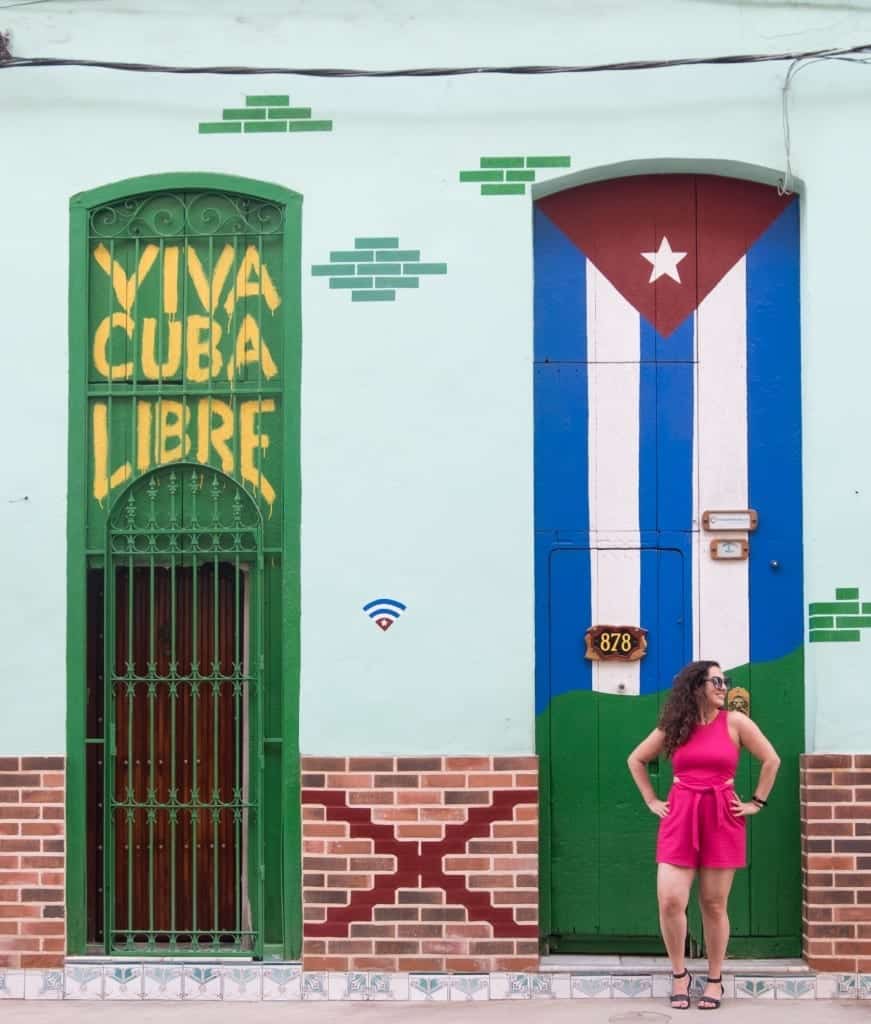
Cuban Conversations
A hot pink Corvette drops us off at a brightly painted building in Central Havana. We’ve signed up for a seafood cooking class — one of the most highly rated Airbnb Experiences we saw, filled with rave reviews.
Odalys has been waiting with plates of prepped vegetables. She shows off the three lobsters — not quite North Atlantic lobsters, but large and juicy. We’re going to be making lobster enchiladas today, but they’re not the kind of enchiladas you might expect — there are no tortillas in sight. This is lobster stewed in sauce.
Her friend Ivan serves as translator. “You can each cut the vegetables. Cut them small.”
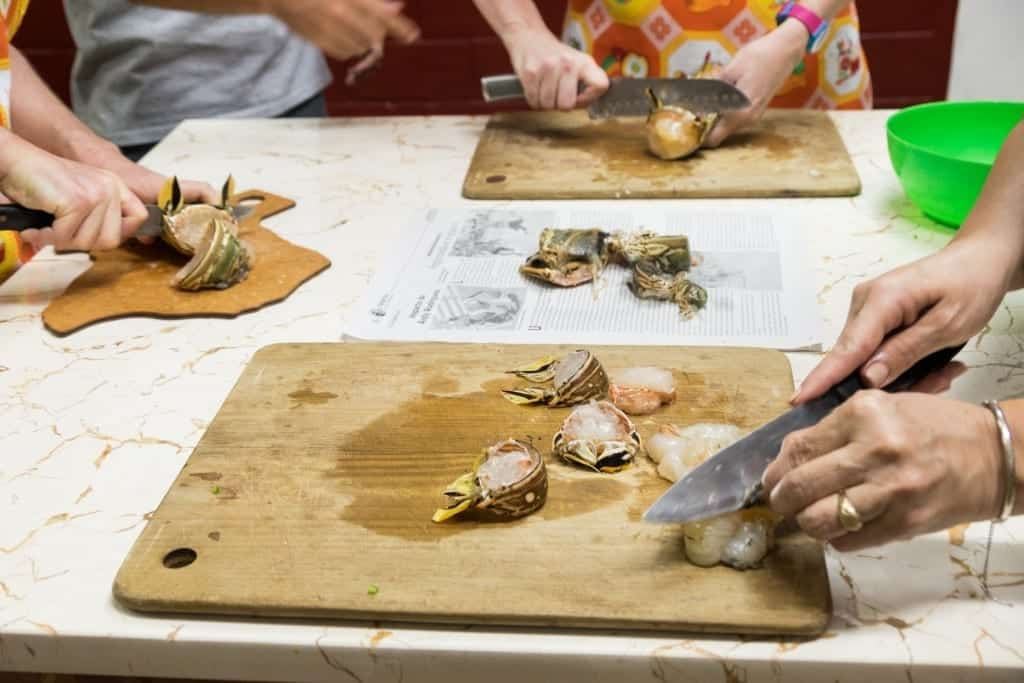
We each take our place — me with peppers, Charlie with garlic, Klara with onions, dicing them up tiny. When we’re finished, Odalys shows us how to make the proper breaks on the lobster tail, locate its intestine, and pull it out, long and spaghetti-like.
As a native New Englander, I know my way around a whole lobster, but damn, I’ve never disemboweled one before! (Is, um, is this something we’re always supposed to do?)
Odalys shows us how to cut the lobster tail, still in its shell, and we stew it in the onions, peppers, and garlic. Odalys opens a bottle of crushed tomatoes and adds it to the sauce with lots of cayenne pepper.
Onions, peppers, and tomatoes. Same as the ingredients in ropa vieja, the only Cuban dish I’ve attempted to cook before. Same as the ingredients in the Cuban shrimp dish we had the night before.
And then it hits me.
Onions, peppers, and tomatoes, again and again. These were the only vegetables I saw on the carts. Maybe these vegetables are the ingredients of so many Cuban dishes because these are the only vegetables Cubans can access on a regular basis.
That moment knocks me over. Imagine if you only had access to a few vegetables.
As the lobster cooks, we squish plantains for tostones, chop up tomatoes, and add lime juice to our glasses filled with Havana Club rum.
Ivan leans in periodically to translate Odalys’s instructions, and he’s casually browsing the internet on his phone the whole time — an unexpected image. Most people in Cuba make the most out of their limited internet and focus intently, signing out the moment they are finished to save the minutes for next time.
Ivan was one of the first Cubans to get a 4G package for locals, which began rolling out in late 2019.
We compliment Ivan on his English — he even gets idioms. “I get the weekly package,” he replies. “I watch Kimmel, I watch Trevor Noah.”
The weekly package, El Paquete Semanal, is something truly unique to Cuba — it’s a terabyte of data worth of TV shows, movies, apps, and classified ads. It gets collected by anonymous Cubans and distributed via networks across Havana and the whole island. They come to your house and copy the hard drive onto your computer.
The cost? $1. The BBC did a feature on it here.
It’s internet without internet — an amazing way that Cubans use their networks to connect with the world.
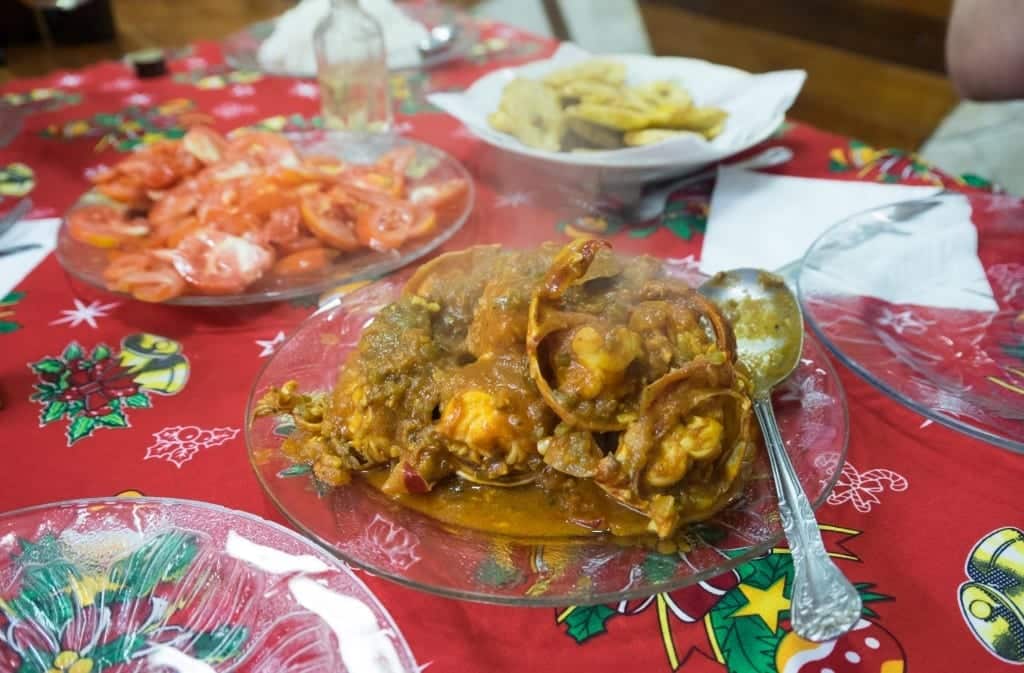
Soon, it’s time to eat, and the lobster enchiladas are sublime — fresh lobster bathed in tomato sauce with just the right amount of spiciness. Tostones, rice, and sliced tomatoes fill out the rest of the meal. It’s the best thing I eat in Cuba.
During the meal, the rum is flowing and I get up the nerve to ask Ivan the question I’ve been wondering for years.
“How do you feel about US citizens?” I ask Ivan. “Do Cubans like Americans?”
“Of course,” he replies, and my body relaxes. “We’ve always loved Americans. We just don’t like your president.”
“Well, that makes two of us,” I say. “Were you happy when Obama came to Cuba?”
“Obama was more of the same,” he replies.
I pause. “More of the same? He did more to open Cuba than any other president.”
“It made no difference to us,” he says. Point taken.
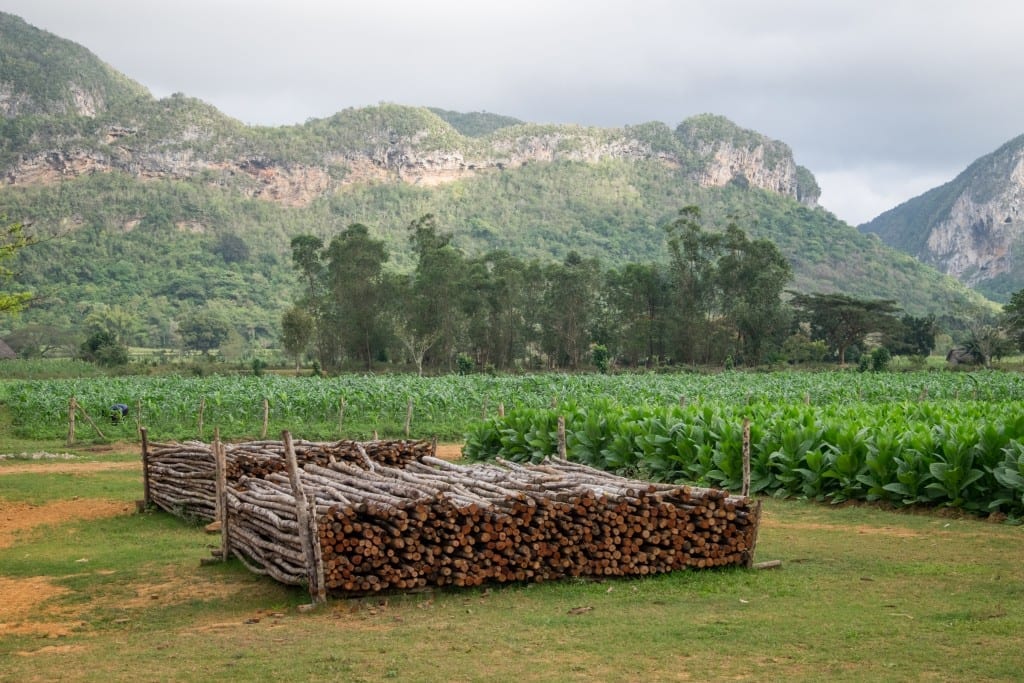
Airbnb in Cuba, and Economic Opportunity
In 2022, the average monthly salary in Cuba was estimated to be $4200 CUP, which is just $175 per month. That’s incredibly low. That’s why tourism is so critical here, especially when you buy from people directly — it has potential to change their lives for the better.
I was so impressed with Odalys’s operation. She doesn’t just teach the cooking class — she and her husband rent rooms out to travelers. They have an Instagram-friendly mural on the outside of the building. They partner with local drivers to bring people there. Everything is a hustle, and it pays off.
I noticed that at our apartment rental in Havana, too. Gladys, the owner, had several other possible income streams for her guests. She was happy to provide drinking water, for a fee, and to change money, at a rate that would earn her money.
Odalys charges $39 per guest for her cooking class. After Airbnb fees and food expenses, that’s probably at least $20 profit per person. Can you imagine how much that adds up over the course of a month?
I talk a lot about how Airbnb has made life worse for many people — especially cities where it’s massively reduced housing availability for locals, like Barcelona and Lisbon, and cities where Airbnb refuses to follow the law, like New York and New Orleans. And I think that we as travelers have a responsibility to use Airbnb responsibly.
But in Cuba, where locals are limited in their earning power, Airbnb is providing incredible economic opportunity.
I just hope the Cubans that rely so much on tourism are able to keep their incomes afloat in 2024 and beyond.
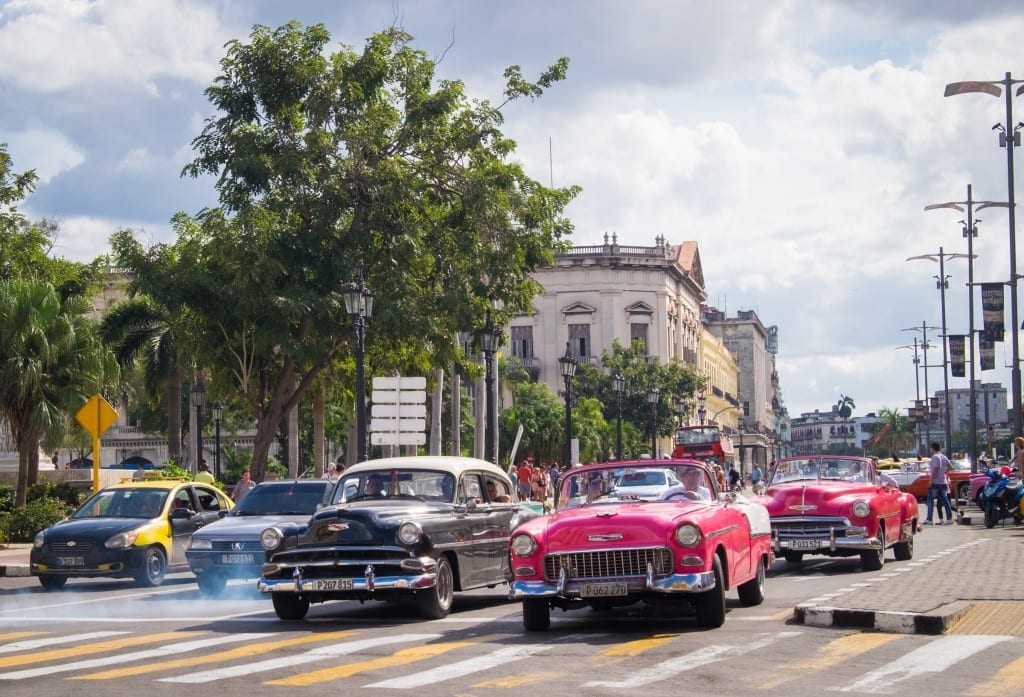
How to Use Internet in Cuba
You see “free wifi” signs everywhere around the world — but in Cuba, it has a different meaning. Normally, “free wifi” means you can hop on the internet with no issues. In places like Belarus and Turkey, it usually means free wifi if you have a local phone number.
But in Cuba, “free wifi” usually means that there’s a wifi network nearby that you can use — but with the wifi cards you already paid for.
Don’t have any wifi cards? You’ll need to buy some. You can get them at the local Etecsa store; some hotels sell them, too. They cost $1 per hour, and some people on the street sell them for more, saving you the wait in line.
You can easily tell a wifi hotspot in Cuba because you’ll see people clustered around and absorbed in their phones. One popular spot in Old Havana is outside the Hotel Ingleterra; you can also find hotspots at Etecsa stores and in some parks.
Occasionally you’ll find a place where you can hop on the wifi without entering your card info. These places are rare, but they do exist.
I was shocked that my American AT&T phone plan actually worked in Cuba — though not for data. Rates were extremely high at $3 per minute, $0.50 per text, and $1.30 per photo or video sent.
Do not touch any banking sites or apps while you’re in Cuba, including sites like Paypal and Venmo. I had to fight the urge to check my balance. If you access any banking sites or apps while in Cuba, your account will be frozen.
And that’s a huge pain in the ass to deal with when you get home and can’t use an ATM or call an Uber. Or worse — if your phone plan is attached to your frozen bank account and you miss a payment, you might not even have working data when you get back to America!
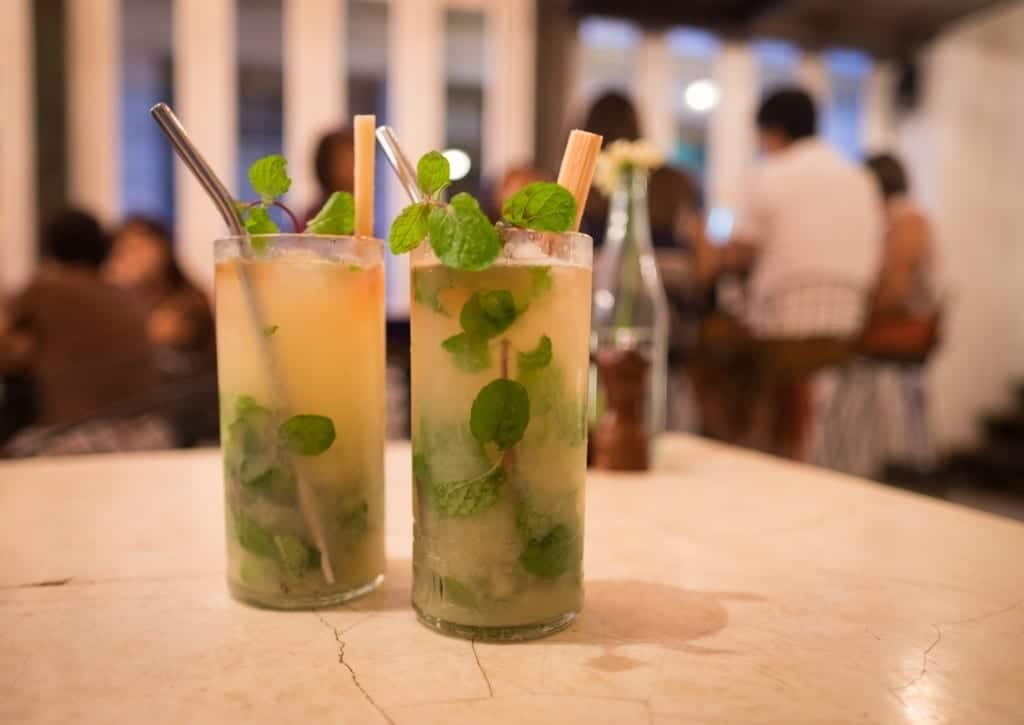
Karaoke in Cuba
Karaoke isn’t much of a thing in Cuba — but if anyone can track a karaoke spot down, it’s my friend Harvey (a.k.a. H-Bomb). He has sung karaoke in all 50 states and countries as far-flung as North Korea. He’s in Havana at the same time as us, and he’s found a bar — La Esencia in Vedado has karaoke starting at 9:00 PM on Wednesdays. We go to cheer him on.
Harvey introduces himself in Google-translated Spanish, announcing that Cuba is his 65th country where he’s sung karaoke, and launches into “La Bamba.” And the locals are loving it, cheering him on and taking photos of this gringo singing in perfect Spanish.
The rest of us sing a bit here and there — Rihanna and Madonna have their moments. But the funniest thing by far is that the English songbook has the songs and artists out of order, making the most hilarious pairings. We read through the book and CRY with laughter! Some of our favorites:
- Bob Marley — “Man! I Feel Like a Woman”
- Tom Jones — “Oops, I Did It Again”
- Janis Joplin — “YMCA”
- Barbra Streisand — “You Shook Me All Night Long”
- Coolio — “Genie in a Bottle”
- Ray Charles — “I Like to Move It Move It”
- Whitney Houston — “Just a Gigolo”
- John Denver — “Another Brick in the Wall”
- Tony Bennett — “Like a Virgin”
- And finally, Shania Twain — “Who Let the Dogs Out?”
Admit it — you can hear ALL OF THOSE perfectly.
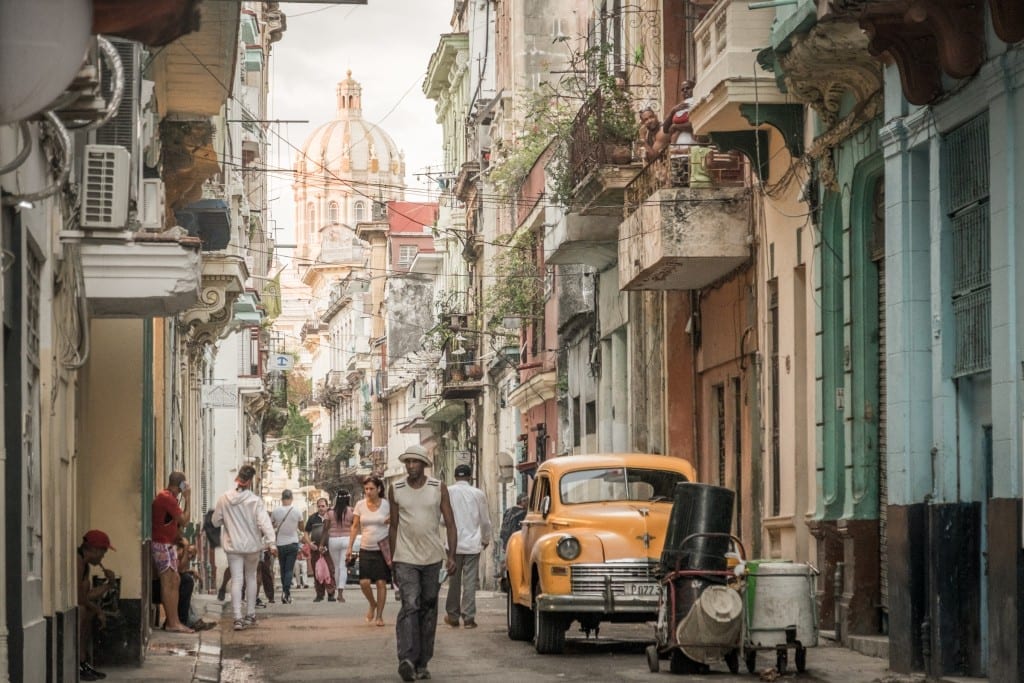
Cuba is a Hard Place to Travel
I have to be truthful with you guys. While I had some wonderful experiences in Havana, after the first five days, I didn’t like Cuba much. And it pains me to write that because I really wanted to like it and I try to find the good in everywhere I visit.
Every day that we went out in Havana, especially Old Havana, I felt stressed. Walking down the street, people constantly asked if I wanted a taxi. If I was on my own, it was nonstop catcalls. The streets and sidewalks were so broken that you had to constantly watch your step.
It was noisy, hot, and unpleasant smells permeated the air. And as nice as those classic cars are, they produce a disgusting amount of exhaust that fills the air and clings to the buildings.
Unfortunately, it was very difficult to find decent food in Havana. The best food in Cuba tends to be in the countryside, not the cities. My friend Ayngelina wrote a guide to the best restaurants in Havana, which was very helpful, but aside from places on that list, we ate a lot of disappointing food.
And the one time we found a somewhat decent breakfast place — a restaurant called El Cafe with a hummus and roasted pepper sandwich — of course it was mysteriously closed for the rest of our trip. Not the biggest deal, but in a city where the food isn’t that great, you yearn to revisit the places that are good.
And it seems like everything was just such a hassle. Klara bought a ticket for 9:00 AM bus — then showed up and was told it was sold out, even though she had bought a ticket online, and they had decided to book her on the 4:00 PM bus without telling her.
I felt the need to escape the madness each day — to go back to my apartment in the afternoon and just rest or read.
Even after leaving Havana, I hated feeling vulnerable as an American in Cuba — that if there were an emergency, I had no way to access money. Getting stranded with no money was a constant worry as I traveled the country.
It’s not that I disliked Cuba because it was hard — I’ve traveled to lots of challenging places. Lebanon had very little travel infrastructure, and Albania was super frustrating at times, but I had a great time in both countries.
And it wasn’t because of the lack of internet. I was eager for a digital detox. Twelve days without internet in Antarctica was blissful. The Rupununi region of Guyana was remote, unconnected, and mice pooped on my head from the rafters in the bathroom, but I fell in love with the nature and loved being off the grid.
Why didn’t I like Cuba as much as other challenging destinations? I found that the things I loved about Cuba the most — the people and the music — weren’t quite enough to make up for everything else. Since this trip, I’ve talked to many of my well-traveled friends and several of them feel similarly about Cuba.
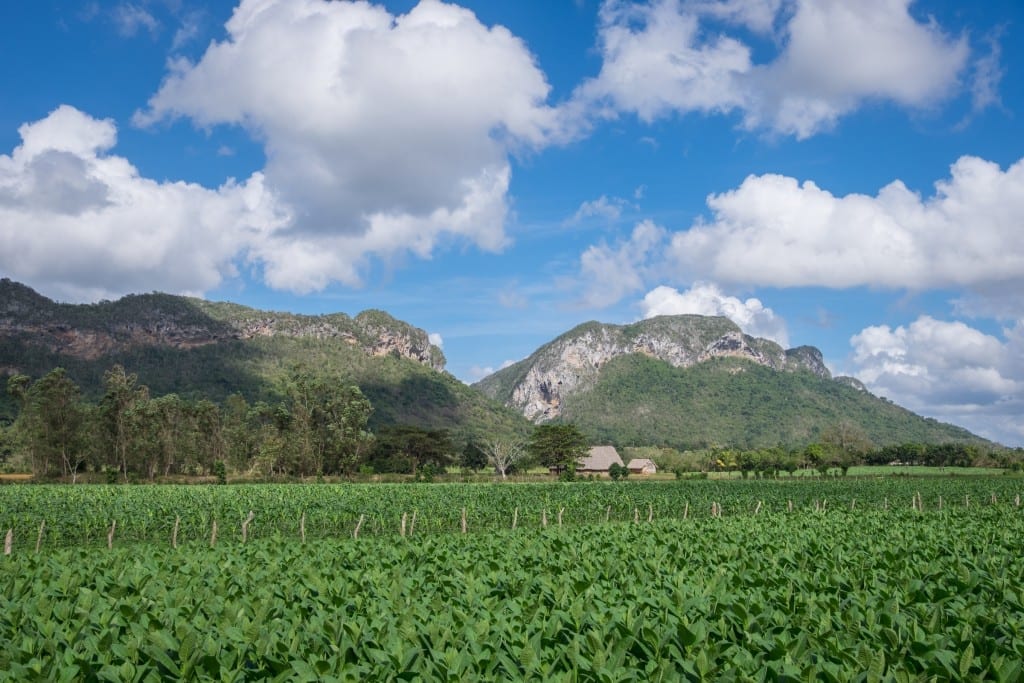
Viñales
My trip to Cuba was in danger of being a bust — but then we got to Viñales, and it saved the trip. This bright green region was like a balm for my soul.
If you’re looking to travel from city to city in Cuba, you’ll need to book a bus or take a colectivo, a shared private vehicle. Buses to Viñales have been sold out for a long time, so we ask a taxi driver for a colectivo. He drops us off on a garbage-strewn road outside the bus station.
After asking locals, and being told to wait, and sitting on cement and smelling the garbage for 45 minutes, the man in charge beckons us over to a red classic car filled with travelers.
I’m jammed up in the middle seat in the front row between Charlie and the driver. Our driver charges down the highway, jovially honking at the other drivers he sees.
Soon the highway turns into curvy mountain roads, and then we’re surrounded by some of the most beautiful verdant scenery I’ve ever seen. The mountains here look like the limestone karats of southern Thailand, and it’s all surrounded by the bright green fields of tobacco.
Viñales is a small town. It’s laid out with casas particulares, restaurants, and bars. Super touristy? You bet. But after Havana, it feels nice to be somewhere that feels easier. Especially with bars like 3 Jotas [2024 Update: it’s been renamed Bar Tapas 3J] that let you pour your own rum into your piña colada. (Oh, and less is definitely more when it comes to rum in piña coladas.)
The next morning, we head out on a tour of the surrounding area with Osniel, an English teacher and local guide from our casa, and two French guys. Many people who come to Viñales choose to explore on horseback; I’ve heard that not all horses are treated well here, so I’m happy to walk.
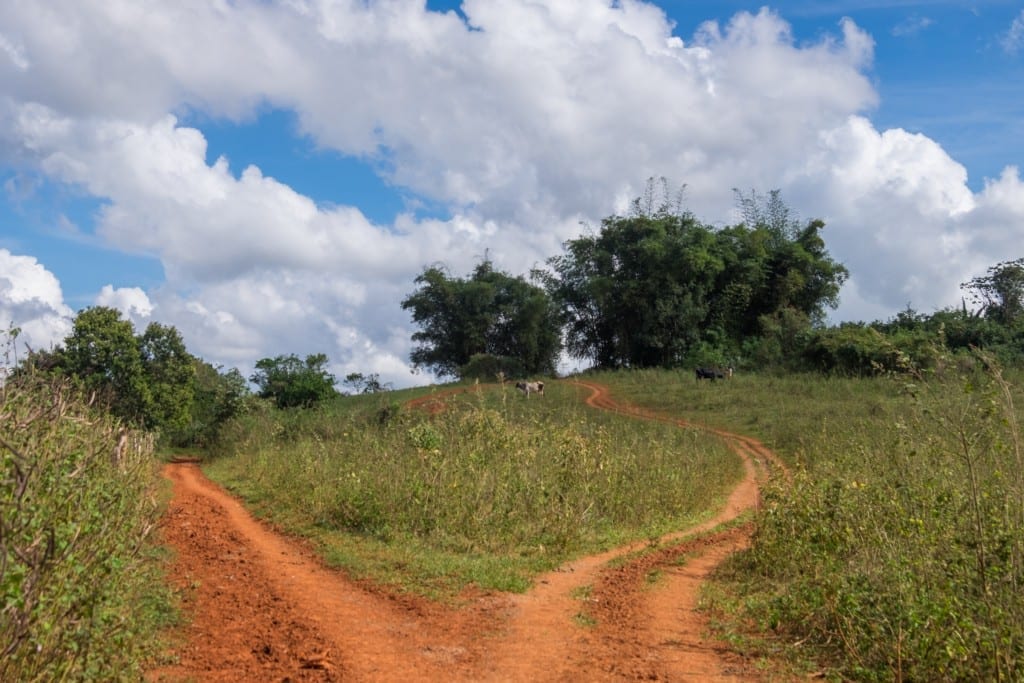
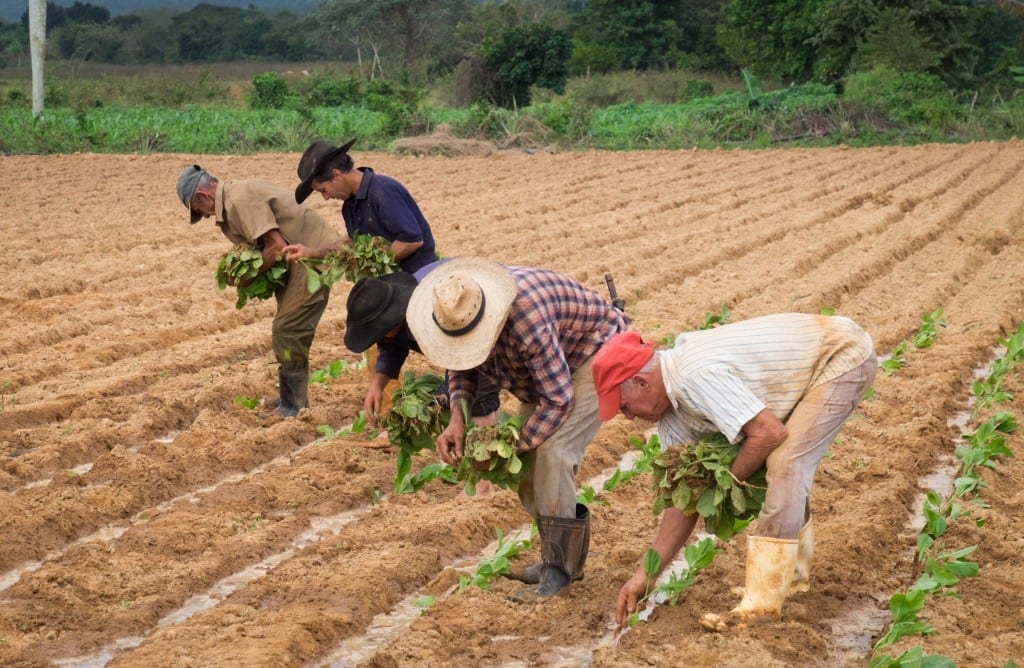
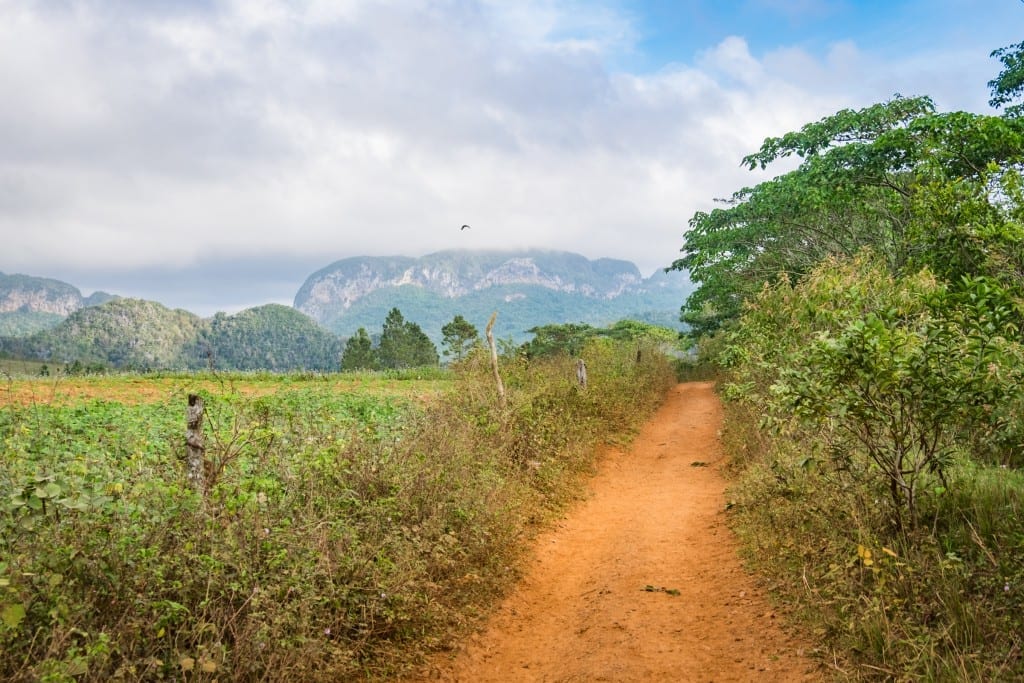
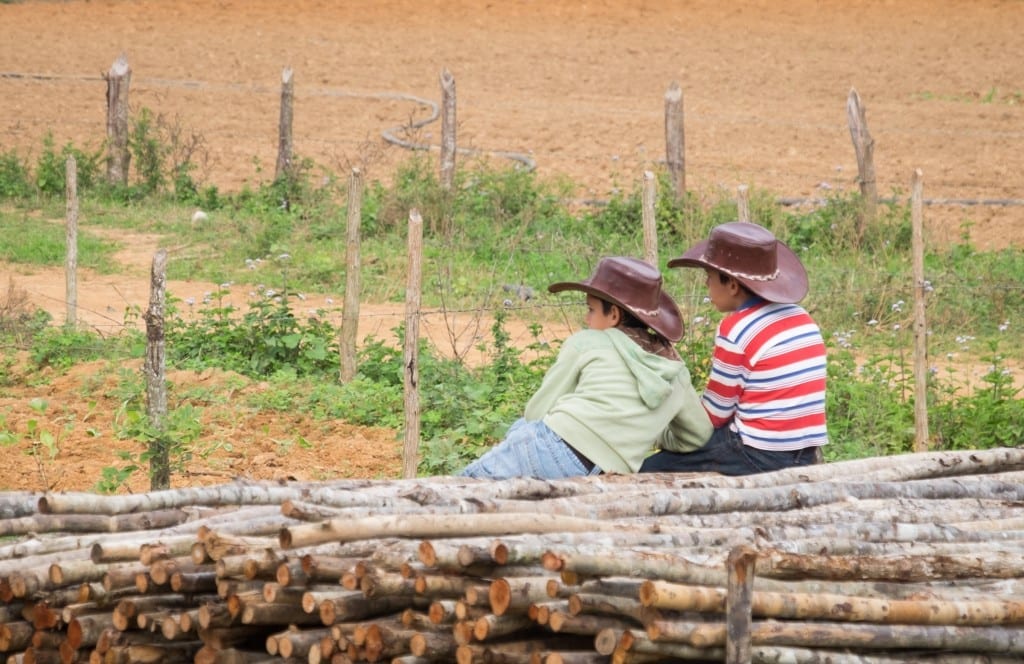
After an hour’s walk along bright orange dirt paths, we come across a farm. Tobacco is the primary crop in this part of Cuba. The land was given to farmers after the revolution in 1959, and in exchange, the government takes 90% of what they produce, compensating them very little.
Enter tourism. We’re the first group to arrive at the farm and we order juices. Soon, others join us and we’re on a rotating circuit of learning how coffee is made, how rum is made, and of course you can buy any of these products to take home. (We grab cigars.) Tourism has made a big impact in this part of rural Cuba.
And though it might sound too touristy — it’s not. Everyone is wonderful. We have free time and decide to lounge around, drink in the atmosphere.
A pregnant dog snuggles up to us, her belly suggesting that she doesn’t have long to go, and a tiny black kitten screeches at the top of his lungs, sounding more like a goat than anything feline. Charlie picks up the kitten and names him Montecristo.
From the farm we hike past more gorgeous mountains to a cave and one of the French guys dares to take a dip in the ice-cold darkness. After another stroll, we head back to the farm for lunch, then take the hourlong walk back.
At night we feast on ropa vieja for the first time in Cuba, much better than the version I made in my Instant Pot in New York, the beef cooked slowly with onions, peppers, and tomatoes.
Viñales was a joy. I’m so glad we went.
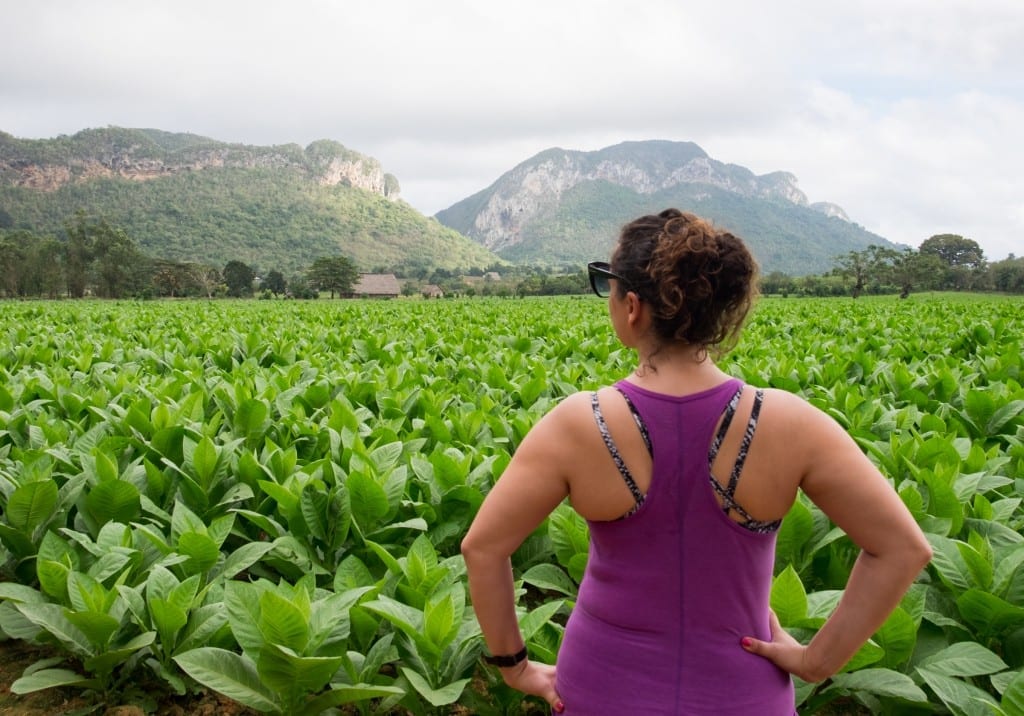
Traveling to Cuba: The Takeaway
Osniel books us a ride back — a classic car, natch — and we return to Havana Airport. Looking at the departure screen, I shake my head at the list of cities — Miami. New York. Atlanta. Half of the international departures are to the United States and people have no idea that this is possible.
There is absolutely no reason for the ban on travel to Cuba today. It is a ridiculous grudge that our government has held for more than 60 years. I’ve traveled to more than 80 countries around the world and I’ve seen that the US has close relationships with countries who do far worse than Cuba.
Cuba is not a threat. This embargo serves nobody.
If the United States were serious about retaliating against the countries who have caused harm to the United States, they’re better off starting with Russia, for the war in Ukraine and hacking the 2016 US election, and Saudi Arabia, for sanctioning 9/11 and killing Saudi journalists living in the United States.
Hell, China and Myanmar are actively carrying out genocides at the time of writing, and it’s a lot easier to travel to them than Cuba.
I hope that President Biden continues the baby steps Obama made and allows our countries to reconnect once again.
As far as travel to Cuba goes, however, I would recommend doing things a bit differently. Five days was way too long for Havana; I think you’re better off with two full days. I’d even recommend staying in a posh neighborhood like Vedado, away from the chaos of Old Havana.
Would I return? I’m not sure. Klara traveled longer in Cuba, both with her dad and on her own, and while she loved Viñales and enjoyed the beach by Trinidad, she found the rest of the country to be an enormous hassle. I have the feeling I’d feel the same way.
Our plane touches down in Mexico City and I sigh with relief. Sure, I’m excited for tacos and internet. But more importantly, I have access to money in case of an emergency. The uneasiness has left my body.
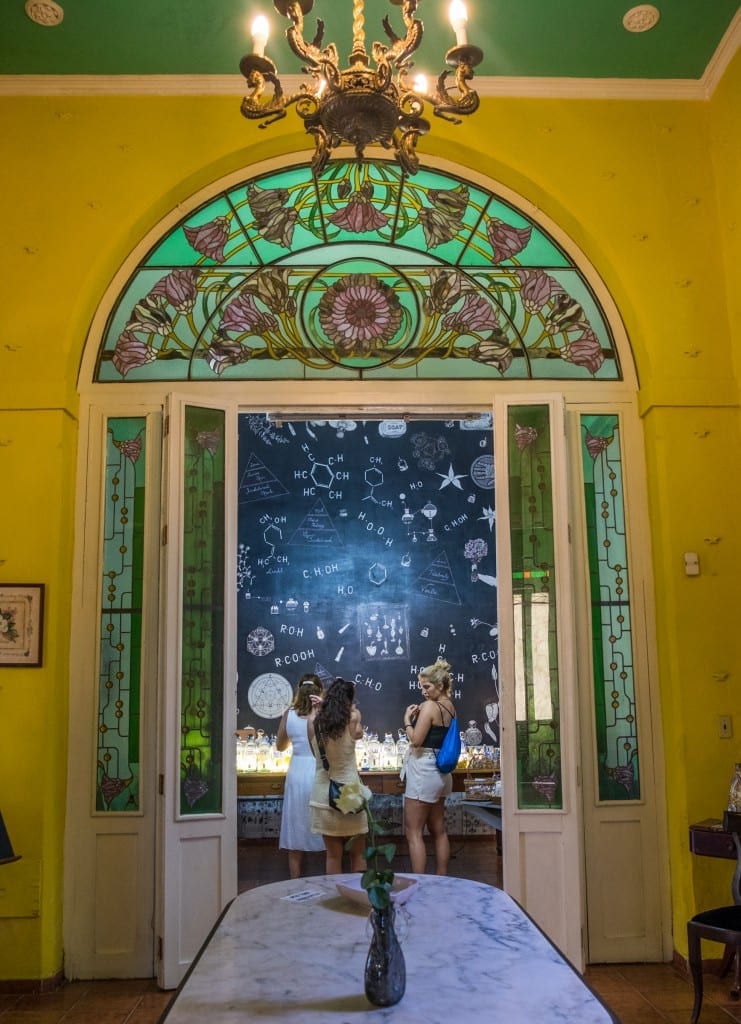
Don’t Mention Cuba to Your Bank
A few days later in Mexico, I reimburse Charlie for travel expenses. And I write “CubaMerida” in the memo. THAT was a mistake.
Normally my financial transactions go through in moments, but I get an email from the bank saying that this transaction is going to take a little longer on their end, and it won’t take more than a few days.
Soon I have another email from the bank in my inbox, asking why I put “Cuba” in the memo of a transaction. Was I spending money in Cuba?
Shit.
I email them back saying that I was reimbursing Charlie for photography. (And true, he did take all of the photos of me on this page.)
The bank emails me back, pointing out that a month earlier, I sent a payment to Charlie with the memo “flights.” “Did you also pay Charles for flights to Cuba?”
ARGH. For the record, I didn’t. Those were different flights.
I angrily forward them the confirmation of my flights from Prague to Boston and back, the actual flights I had reimbursed him for a month earlier.
I post about this ridiculousness on Facebook and am flooded with tales from friends who went through the same thing. Turns out you can’t say Cuba anywhere. One friend even had his Venmo account frozen for reimbursing his friend for a Cuban sandwich!
Lesson learned — Americans can travel to Cuba, but be careful how you talk about it afterward.
More on Cuba:
More on the Caribbean:
- Puerto Rico Has it All
- Why You’ll Love Traveling to Antigua and Barbuda
- A Guide to St. Croix, US Virgin Islands
- What It’s Really Like to Travel to Guyana
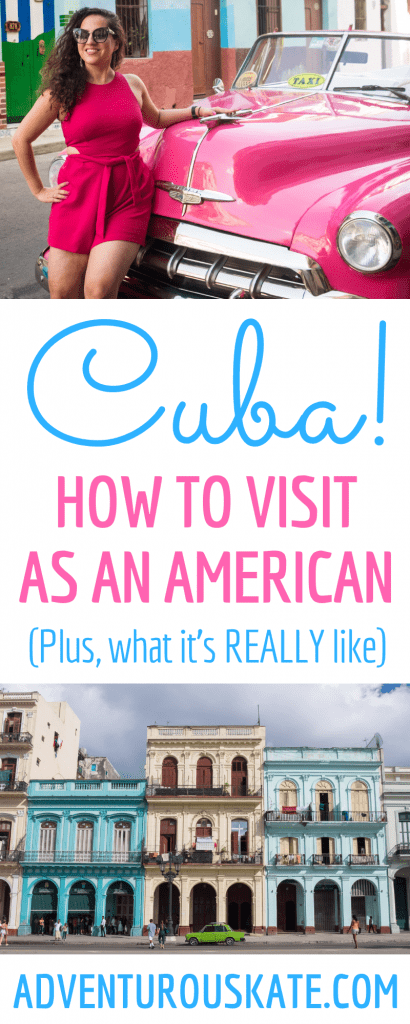
Essential Info
If you’re an American, I highly recommend getting a visa to Cuba through ViaHero — they will give you a customized itinerary, handle tough bookings like transportation, and this will count as the “Support for the Cuban People” category for your general license/visa. Learn more here.
In Havana I stayed at this two-bedroom, two-bathroom apartment on the edge of Old Havana for $50 per night. This was a great apartment; it served as an oasis and the owner was lovely. It is, however, located right on a bus route and extremely loud buses rumble by all night. I recommend bringing earplugs. Check out more places to stay in Havana here.
My cooking class with Odalys in Havana was booked here through Airbnb Experiences. I highly recommend doing this on one of your days in Havana. This was the best meal I had in Cuba and I appreciated learning about Cuban life with Ivan. $39 per person.
It’s tough to find good food in Havana, but Ayngelina has a guide to Havana restaurants here. I enjoyed Paladar Omar, one of her suggestions, and we had a great New Year’s Eve dinner at Genesis.
In Viñales I stayed at this one-bedroom, one-bathroom suite in a Casa Particular in town. $25 per night plus $5 each for breakfast. This was an excellent place to stay with a friendly family hosting and I loved staying here. Check out more places to stay in Viñales here.
We booked our Viñales tour through Osniel, one of the sons at the casa particular. He hopes to be listed on Airbnb Experiences someday. Osniel and his brother Orlando organized our onward journey back to the airport.
Cuba requires travel insurance, and they may ask for proof at immigration. Be sure to double-check that your insurance is valid in Cuba. (2024 update: In the past, I recommended World Nomads for travel insurance, an Australian company, but they have stopped providing coverage in Cuba.)
Have you been to Cuba? How did you like it? Share away!